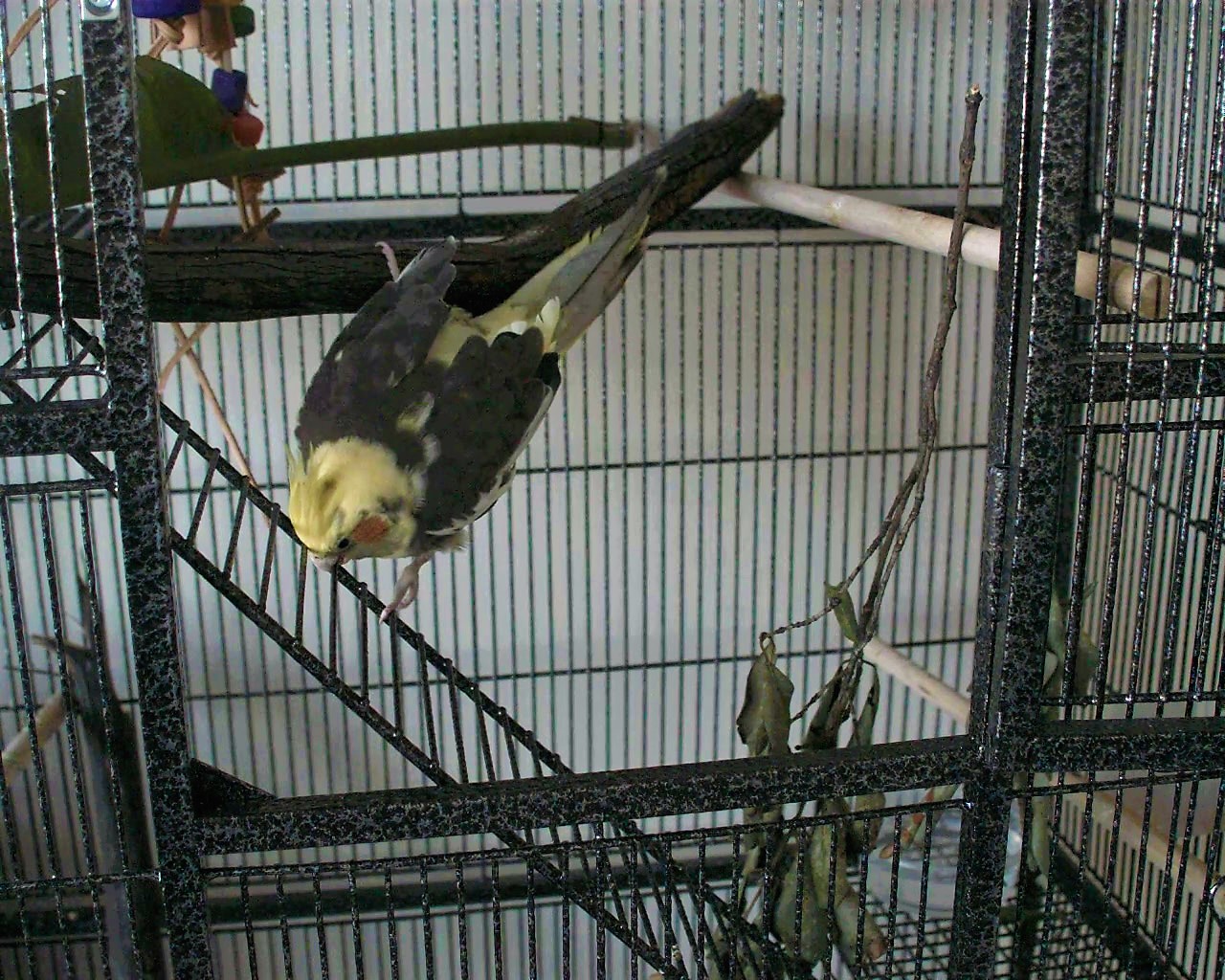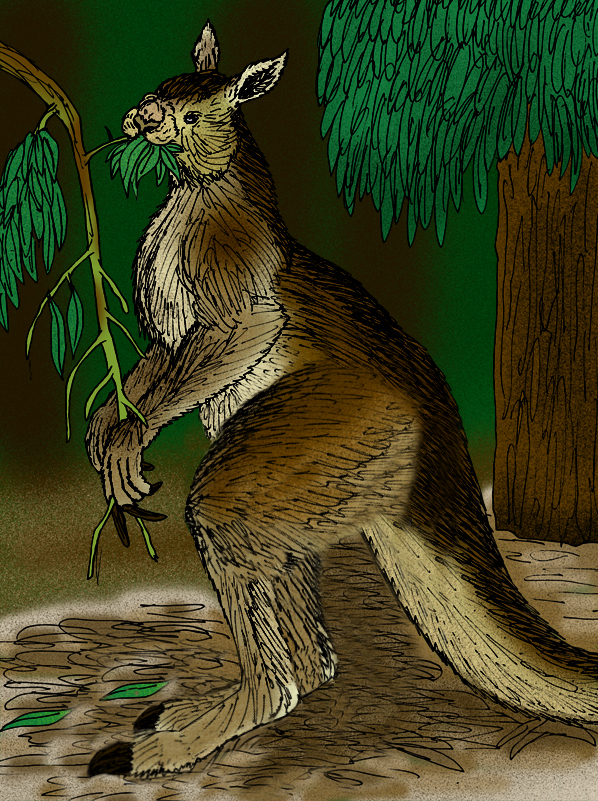|
Triped
Tripedalism (from the Latin tri = three + ped = foot) is locomotion by the use of three limbs. Real-world tripedalism is rare, in contrast to the common bipedalism of two-legged animals and quadrupedalism of four-legged animals. Bilateral symmetry seems to have become entrenched very early in evolution, appearing even before appendages like legs, fins or flippers had evolved.Tracy J. Thomson (2019) Three‐Legged Locomotion and the Constraints on Limb Number: Why Tripeds Don’t Have a Leg to Stand On, ''BioEssays'' 41 (10): 1900061 https://doi.org/10.1002/bies.201900061 In nature It has been said that parrots (birds of the order Psittaciformes) display tripedalism during climbing gaits, which was tested and proven in a 2022 paper on the subject, making parrots the only creatures to truly use tripedal forms of locomotion. Tripedal gaits were also observed by K. Hunt in primates. This is usually observed when the animal is using one limb to grasp a carried object and is thus a non-s ... [...More Info...] [...Related Items...] OR: [Wikipedia] [Google] [Baidu] |
Parrot
Parrots (Psittaciformes), also known as psittacines (), are birds with a strong curved beak, upright stance, and clawed feet. They are classified in four families that contain roughly 410 species in 101 genus (biology), genera, found mostly in tropics, tropical and subtropics, subtropical regions. The four families are the Psittaculidae (Old World parrots), Psittacidae (African and New World parrots), Cacatuidae (cockatoos), and Strigopidae (New Zealand parrots). One-third of all parrot species are threatened by extinction, with a higher aggregate extinction risk (Red List Index, IUCN Red List Index) than any other comparable bird group. Parrots have a generally pantropical distribution with several species inhabiting temperateness, temperate regions as well. The greatest biodiversity, diversity of parrots is in South America and Australasia. Parrotsalong with Corvidae, ravens, crows, jays, and magpiesare among the most #Intelligence and learning, intelligent birds, and the abil ... [...More Info...] [...Related Items...] OR: [Wikipedia] [Google] [Baidu] |
Macropodidae
Macropodidae is a Family (biology), family of marsupials that includes kangaroos, Wallaby, wallabies, tree-kangaroos, wallaroos, pademelons, quokkas, and several other groups. These genera are allied to the suborder Macropodiformes, containing other macropods, and are native to the Australia (continent), Australian continent (the mainland and Tasmania), New Guinea and nearby islands. Description Although Propleopus, omnivorous kangaroos lived in the past, these were not members of the family Macropodidae; modern macropods are generally Herbivore, herbivorous. Some are Browsing (herbivory), browsers, but most are Grazing, grazers and are equipped with appropriately specialised teeth for cropping and grinding up fibrous plants, in particular grasses and Cyperaceae, sedges. Modern omnivorous kangaroos generally belong to a different family (for example, the Musky rat-kangaroo). In general, macropods have a broad, straight row of cutting teeth at the front of the mouth, no Canine t ... [...More Info...] [...Related Items...] OR: [Wikipedia] [Google] [Baidu] |
Animal Locomotion
In ethology, animal locomotion is any of a variety of methods that animals use to move from one place to another. Some modes of locomotion are (initially) self-propelled, e.g., running, swimming, jumping, flight, flying, hopping, soaring and gliding. There are also many animal species that depend on their environment for transportation, a type of mobility called passive locomotion, e.g., sailing (some jellyfish), ballooning (spider), kiting (spiders), rolling (some beetles and spiders) or riding other animals (phoresis). Animals move for a variety of reasons, such as to foraging, find food, a mating system, mate, a suitable microhabitat, or to escape response, escape predators. For many animals, the ability to move is essential for survival and, as a result, natural selection has shaped the locomotion methods and mechanisms used by moving organisms. For example, animal migration, migratory animals that travel vast distances (such as the Arctic tern) typically have a locomotion me ... [...More Info...] [...Related Items...] OR: [Wikipedia] [Google] [Baidu] |
Football (ball)
A football is a ball inflated with air that is used to play one of the various sports known as football. In these games, with some exceptions, goals or points are scored only when the ball enters one of two designated goal-scoring areas; football games involve the two teams each trying to move the ball in opposite directions along the field of play. The first balls were made of natural materials, such as an inflated pig bladder, later put inside a leather cover, which has given rise to the American slang-term "pigskin". Modern balls are designed by teams of engineers to exacting specifications, with rubber or plastic bladders, and often with plastic covers. Various leagues and games use different balls, though they all have one of the following basic shapes: # A sphere, used in association football and Gaelic football # A prolate spheroid (elongated sphere), used in the rugby codes and Australian football # A lemon, used in Gridiron football The precise shape and constructio ... [...More Info...] [...Related Items...] OR: [Wikipedia] [Google] [Baidu] |
Bipedalism
Bipedalism is a form of terrestrial locomotion where an animal moves by means of its two rear (or lower) Limb (anatomy), limbs or legs. An animal or machine that usually moves in a bipedal manner is known as a biped , meaning 'two feet' (from Latin ''bis'' 'double' and ''pes'' 'foot'). Types of bipedal movement include walking or running (a bipedal gait) and jumping, hopping. Several groups of modern species are habitual bipeds whose normal method of locomotion is two-legged. In the Triassic period some groups of archosaurs (a group that includes crocodiles and dinosaurs) developed bipedalism; among the dinosaurs, all the early forms and many later groups were habitual or exclusive bipeds; the birds are members of a clade of exclusively bipedal dinosaurs, the theropods. Within mammals, habitual bipedalism has evolved multiple times, with the Macropodidae, macropods, Dipodomyinae, kangaroo rats and mice, springhare, Hopping mouse, hopping mice, pangolins and hominin apes (austr ... [...More Info...] [...Related Items...] OR: [Wikipedia] [Google] [Baidu] |
Terrestrial Locomotion
Terrestrial locomotion has evolution, evolved as animals adapted from ecoregion#Marine, aquatic to ecoregion#Terrestrial, terrestrial environments. Animal locomotion, Locomotion on land raises different problems than that in water, with reduced friction being replaced by the increased effects of gravity. As viewed from evolutionary taxonomy, there are three basic forms of animal locomotion in the terrestrial environment: *#Legged locomotion, legged – moving by using appendages *#Limbless locomotion, limbless locomotion – moving without legs, primarily using the body itself as a propulsive structure. *#Rolling, rolling – rotating the body over the substrate Some terrains and land cover, terrestrial surfaces permit or demand alternative locomotive styles. A sliding component to locomotion becomes possible on slippery surfaces (such as ice and snow), where locomotion is aided by potential energy, or on loose surfaces (such as sand or scree), where friction is low but purchase ... [...More Info...] [...Related Items...] OR: [Wikipedia] [Google] [Baidu] |
Tetrapod
A tetrapod (; from Ancient Greek :wiktionary:τετρα-#Ancient Greek, τετρα- ''(tetra-)'' 'four' and :wiktionary:πούς#Ancient Greek, πούς ''(poús)'' 'foot') is any four-Limb (anatomy), limbed vertebrate animal of the clade Tetrapoda (). Tetrapods include all Neontology#Extant taxa versus extinct taxa, extant and Extinction, extinct amphibians and amniotes, with the latter in turn Evolution, evolving into two major clades, the Sauropsida, sauropsids (reptiles, including dinosaurs and therefore birds) and synapsids (extinct pelycosaur, "pelycosaurs", therapsids and all extant mammals, including Homo sapiens, humans). Hox gene mutations have resulted in some tetrapods becoming Limbless vertebrate, limbless (snakes, legless lizards, and caecilians) or two-limbed (cetaceans, sirenians, Bipedidae, some lizards, kiwi (bird), kiwis, and the extinct moa and elephant birds). Nevertheless, they still qualify as tetrapods through their ancestry, and some retain a pair of ves ... [...More Info...] [...Related Items...] OR: [Wikipedia] [Google] [Baidu] |
Quadrupedalism
Quadrupedalism is a form of locomotion in which animals have four legs that are used to bear weight and move around. An animal or machine that usually maintains a four-legged posture and moves using all four legs is said to be a quadruped (from Latin ''quattuor'' for "four", and ''pes'', ''pedis'' for "foot"). Quadruped animals are found among both vertebrates and invertebrates. Quadrupeds vs. tetrapods Although the words ‘quadruped’ and ‘tetrapod’ are both derived from terms meaning ‘four-footed’, they have distinct meanings. A tetrapod is any member of the taxonomic unit Tetrapoda (which is defined by descent from a specific four-limbed ancestor), whereas a quadruped actually uses four limbs for locomotion. Not all tetrapods are quadrupeds and not all quadrupedal animals are tetrapods; some arthropods are adapted for four-footed locomotion, such as the raptorial Mantodea, or mantises, and the Nymphalidae, or brush-footed butterflies—the largest butterfly fa ... [...More Info...] [...Related Items...] OR: [Wikipedia] [Google] [Baidu] |
Mutation
In biology, a mutation is an alteration in the nucleic acid sequence of the genome of an organism, virus, or extrachromosomal DNA. Viral genomes contain either DNA or RNA. Mutations result from errors during DNA or viral replication, mitosis, or meiosis or other types of damage to DNA (such as pyrimidine dimers caused by exposure to ultraviolet radiation), which then may undergo error-prone repair (especially microhomology-mediated end joining), cause an error during other forms of repair, or cause an error during replication ( translesion synthesis). Mutations may also result from substitution, insertion or deletion of segments of DNA due to mobile genetic elements. Mutations may or may not produce detectable changes in the observable characteristics ( phenotype) of an organism. Mutations play a part in both normal and abnormal biological processes including: evolution, cancer, and the development of the immune system, including junctional diversity. Mutati ... [...More Info...] [...Related Items...] OR: [Wikipedia] [Google] [Baidu] |
Fine Motor Skill
Fine motor skill (or dexterity) is the coordination of small muscles in movement with the eyes, hands and fingers. The complex levels of manual dexterity that humans exhibit can be related to the nervous system. Fine motor skills aid in the growth of intelligence and develop continuously throughout the stages of human development. Types of motor skills Motor skills are movements and actions of the bone structures. Typically, they are categorised into two groups: gross motor skills and fine motor skills. Gross motor skills are involved in movement and coordination of the arms, legs, and other large body parts. They involve actions such as running, crawling and swimming. Fine motor skills are involved in smaller movements that occur in the wrists, hands, fingers, feet and toes. Specifically, single joint movements are fine motor movements and require fine motor skills. They involve smaller actions such as picking up objects between the thumb and finger, writing carefully, and bli ... [...More Info...] [...Related Items...] OR: [Wikipedia] [Google] [Baidu] |







